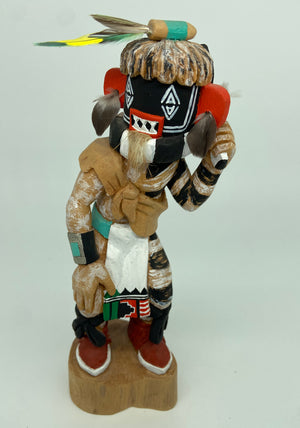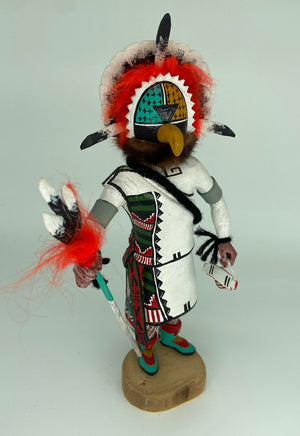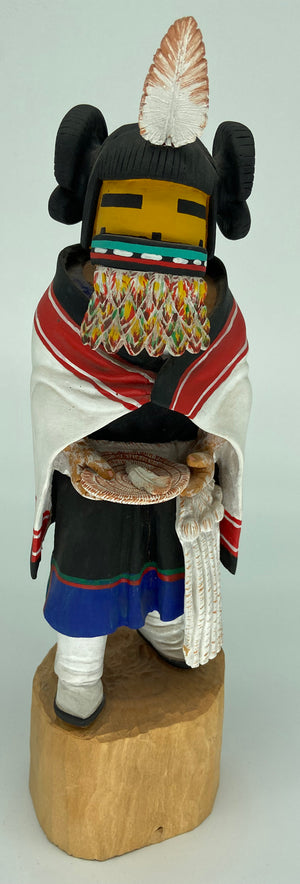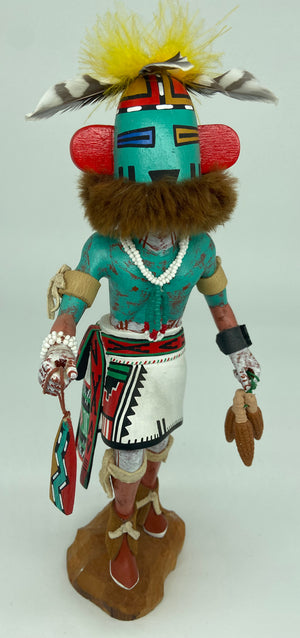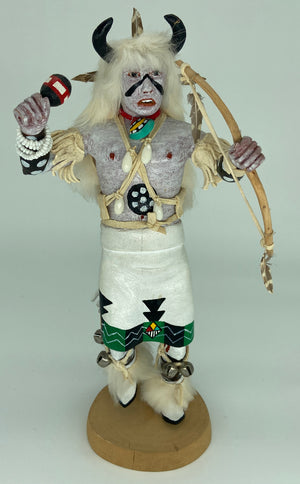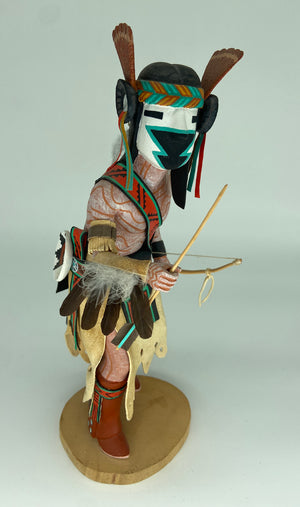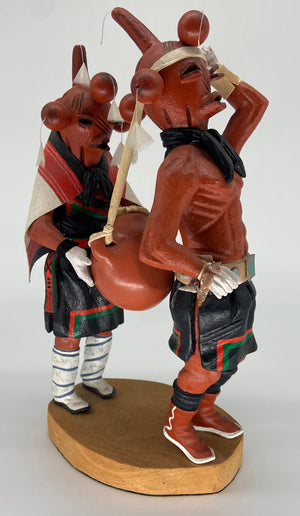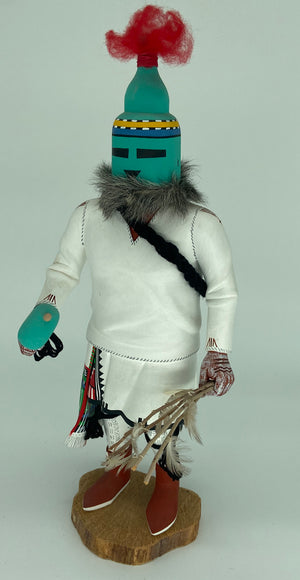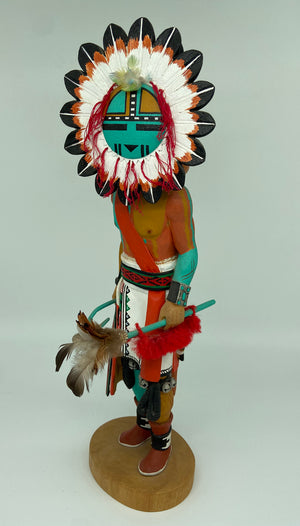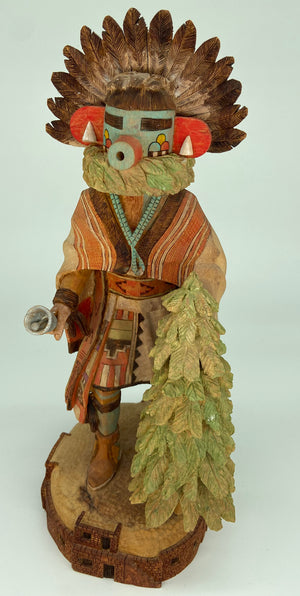- Zuhause
- Katsinas (Kachinas)
- Katsina : White Ogre : Ernest Chapella
Katsina : White Ogre : Ernest Chapella
Verwandte Produkte
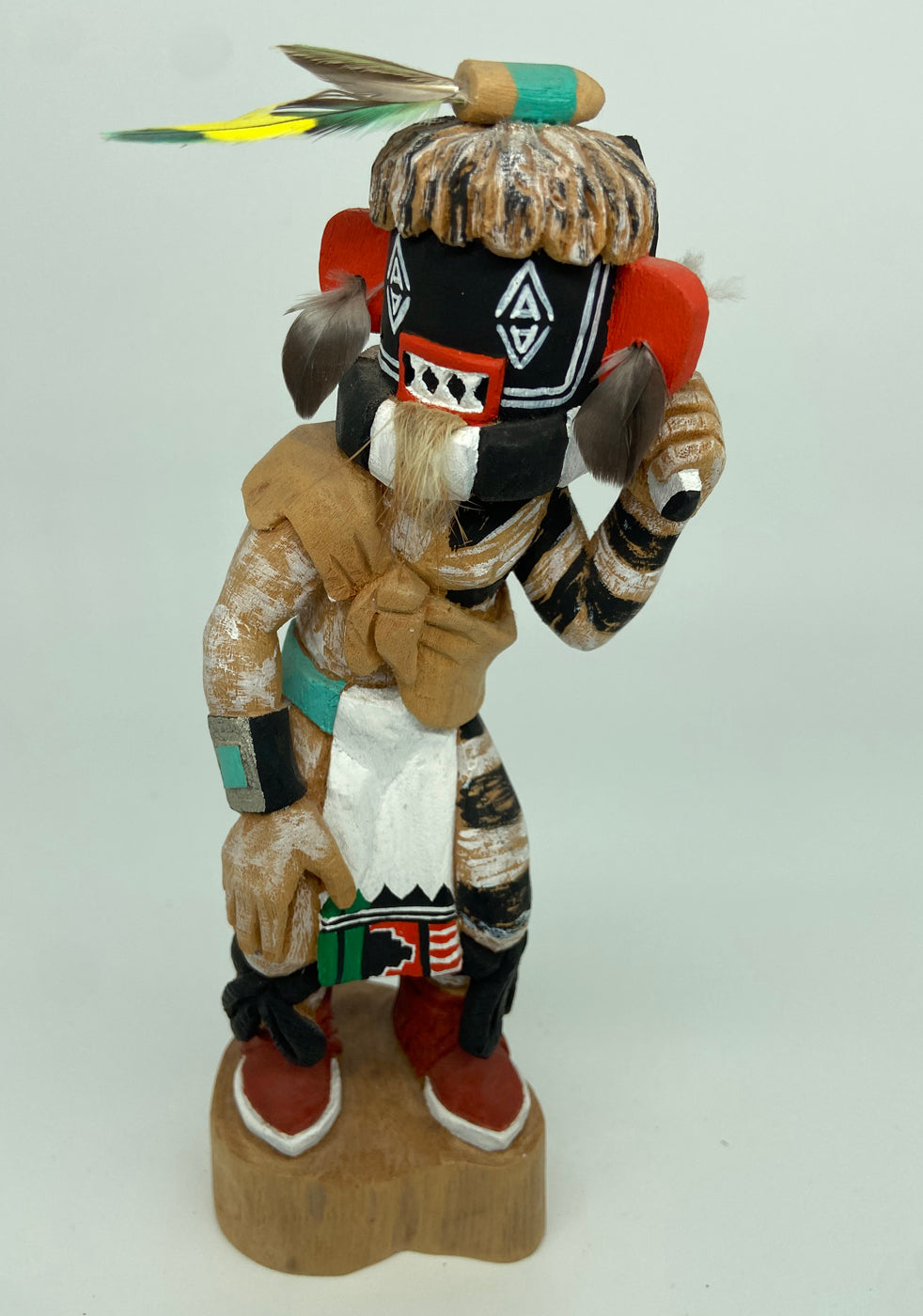
Katsina : Left Hand Hunter : Lowell Talashoma
$ 2,500.00
Left Hand Hunter Katsina by award winner artist Lowell Talashoma. Object : Katsina (Katchina) Title : Left Hand Hunter (Siyangephoya) Carver : Lowell Talashoma. Origin : Hopi Size : 7" Materials : Wood, feathers, fur and paint. The Left-Handed Katsina (Siyangephoya) is said by some to be derived from the Hualapai Indians. He carries his gear op...
Katsina : Ahola
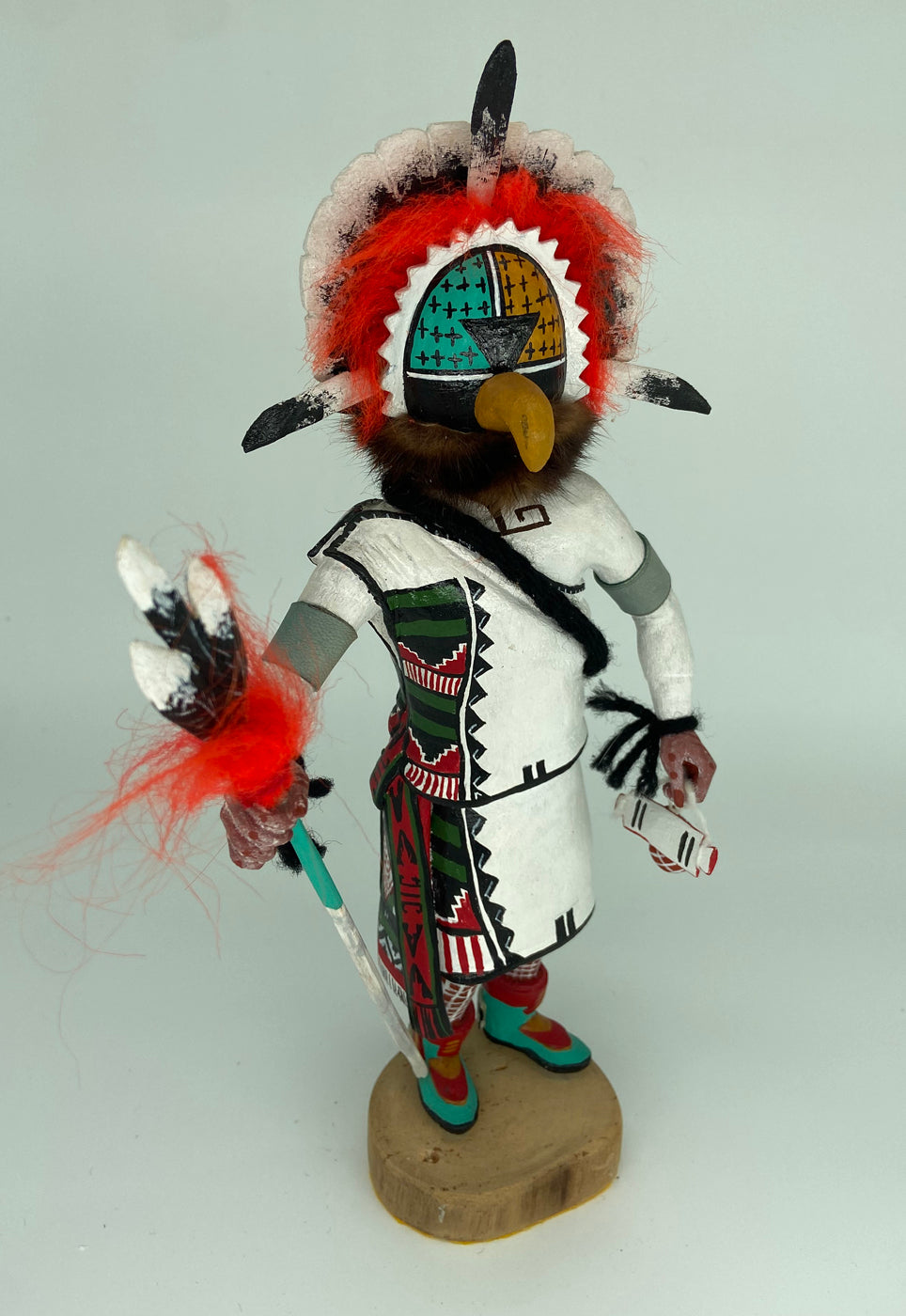
Katsina : Ahola
$ 2,500.00
Ahola Katsina for sale. Item : Ahola Carver : unknown Origin : Hopi Size : 12" Materials : Wood, yarn, fur and paint. Ahola is an important chief katsina for both First and Second Mesa as he opens the Powamu ceremony with a kiva performance on the first night. This performance seems to involve mimetic magic to slow the passage of the sun. At a...
Katsina : Corn Maiden : Lowell Talashoma
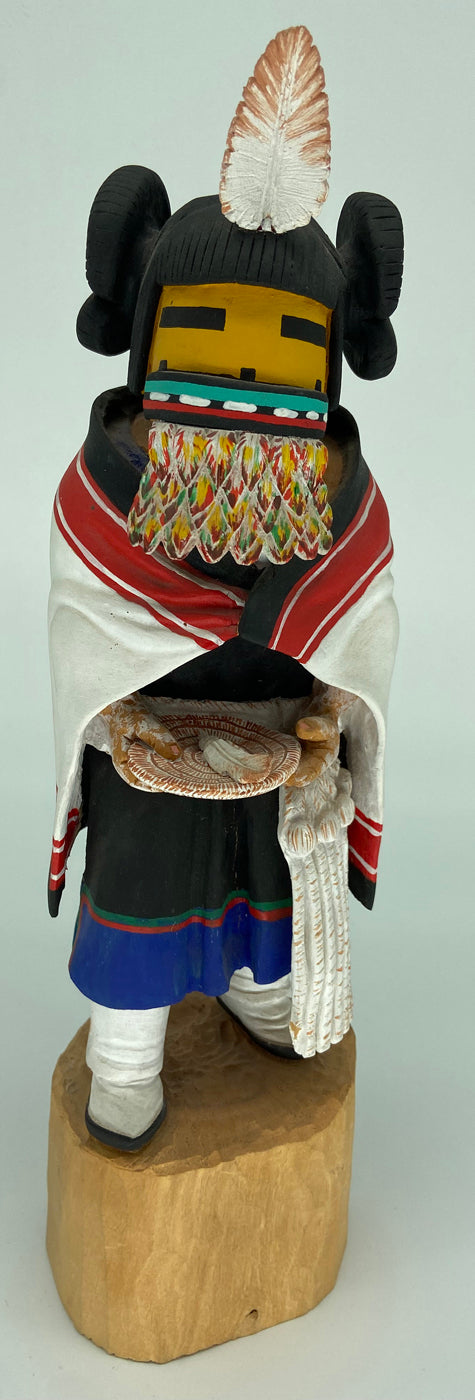
Katsina : Corn Maiden : Lowell Talashoma
$ 3,000.00
Corn Maiden Katsina by award winner artist Lowell Talashoma. Object : Katsina (Katchina) Title : Corn Maiden (Kachin Mana) Carver : Lowell Talashoma Origin : Hopi Size : 13" Materials : Wood and paint Of all the women who appear with other Kachinas, the Kachina Maiden, or Kachin' Mana, is the most prevalent. She often appears in regular Kachina...
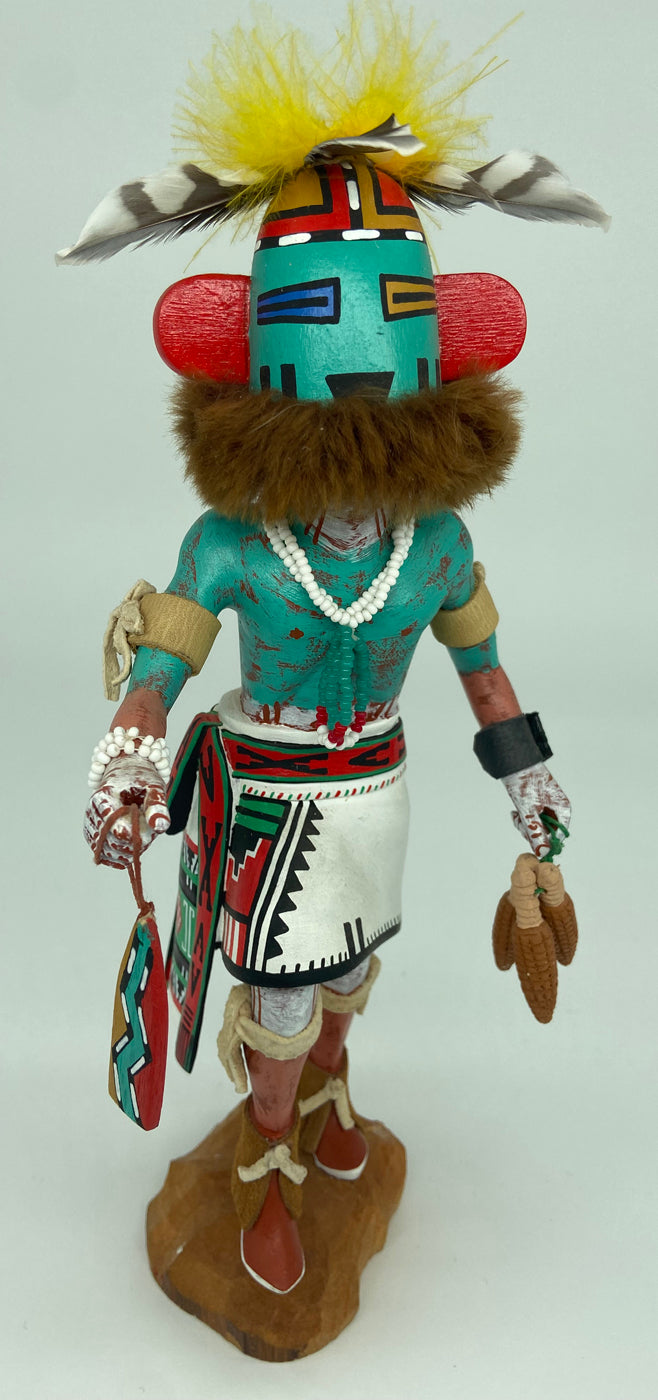
Katsina : Shooting Thunder : Delbert Sewemanewa
$ 2,500.00
Shooting Thunder Katsina by award winning artist Delbert Sewemanewa Object : Katsina (Katchina) Title : Shooting Thunder (Umtoinaqa) Carver : Delbert Sewemanewa Origin : Hopi Size : 10" Materials : Wood, paint, leather, shells, string beads and feathers The Umtoinaqa Katsina, known as the Shooting Thunder Katsina, acts as a guard or policeman d...
Katsina : White Buffalo : Abbot Poncho
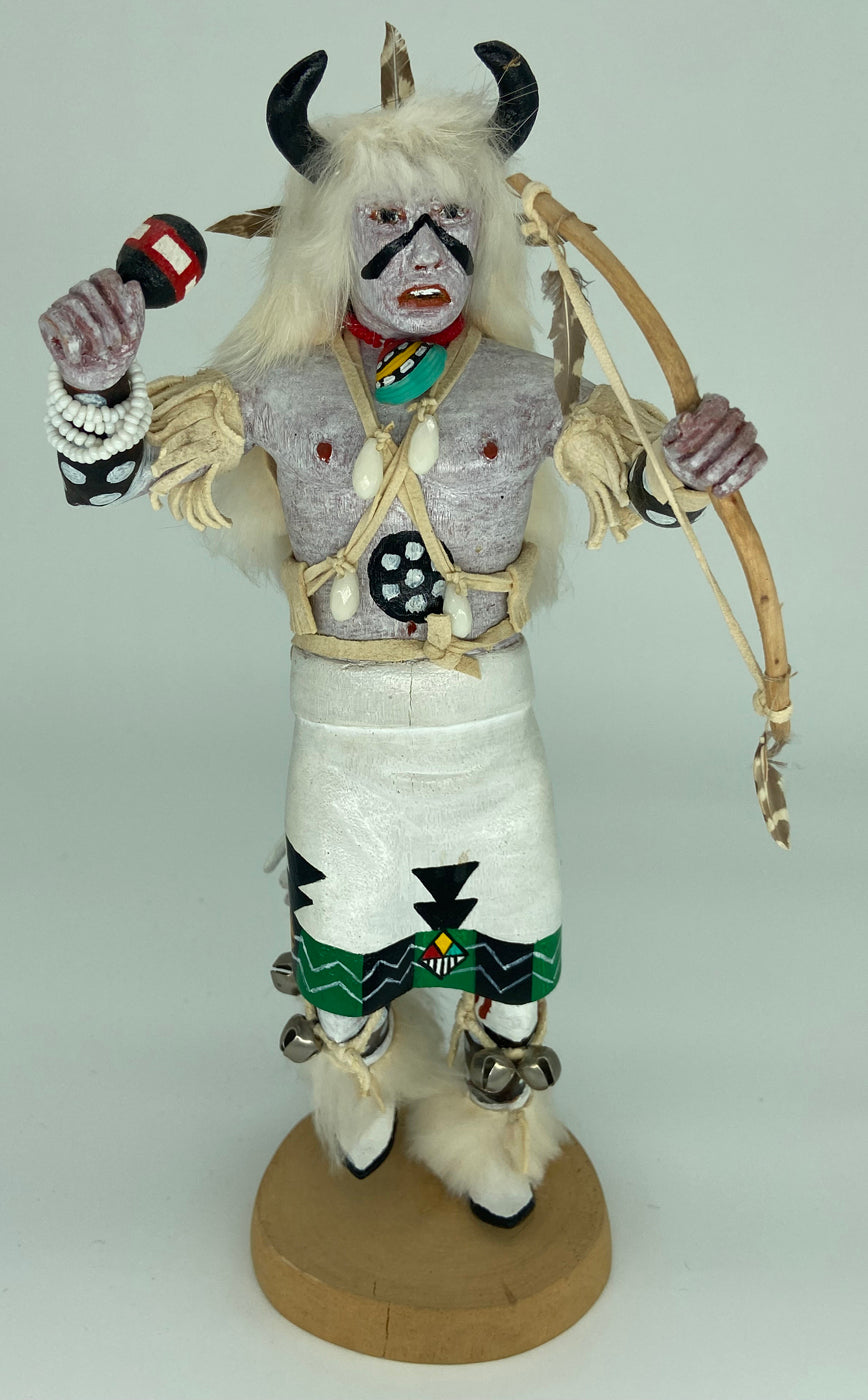
Katsina : White Buffalo : Abbot Poncho
$ 2,500.00
White Buffalo Katsina by award winning artist Abbot Poncho Object : Katsina (Katchina) Title : White Buffalo (Mosairu) Carver : Abbot Poncho Origin : Hopi Size : 11" Materials : Wood, paint, leather, shells, bells, yarn and feathers There is white rabbit fur on the head, embellished with feathers. He wears a leather kilt with painted designs. ...
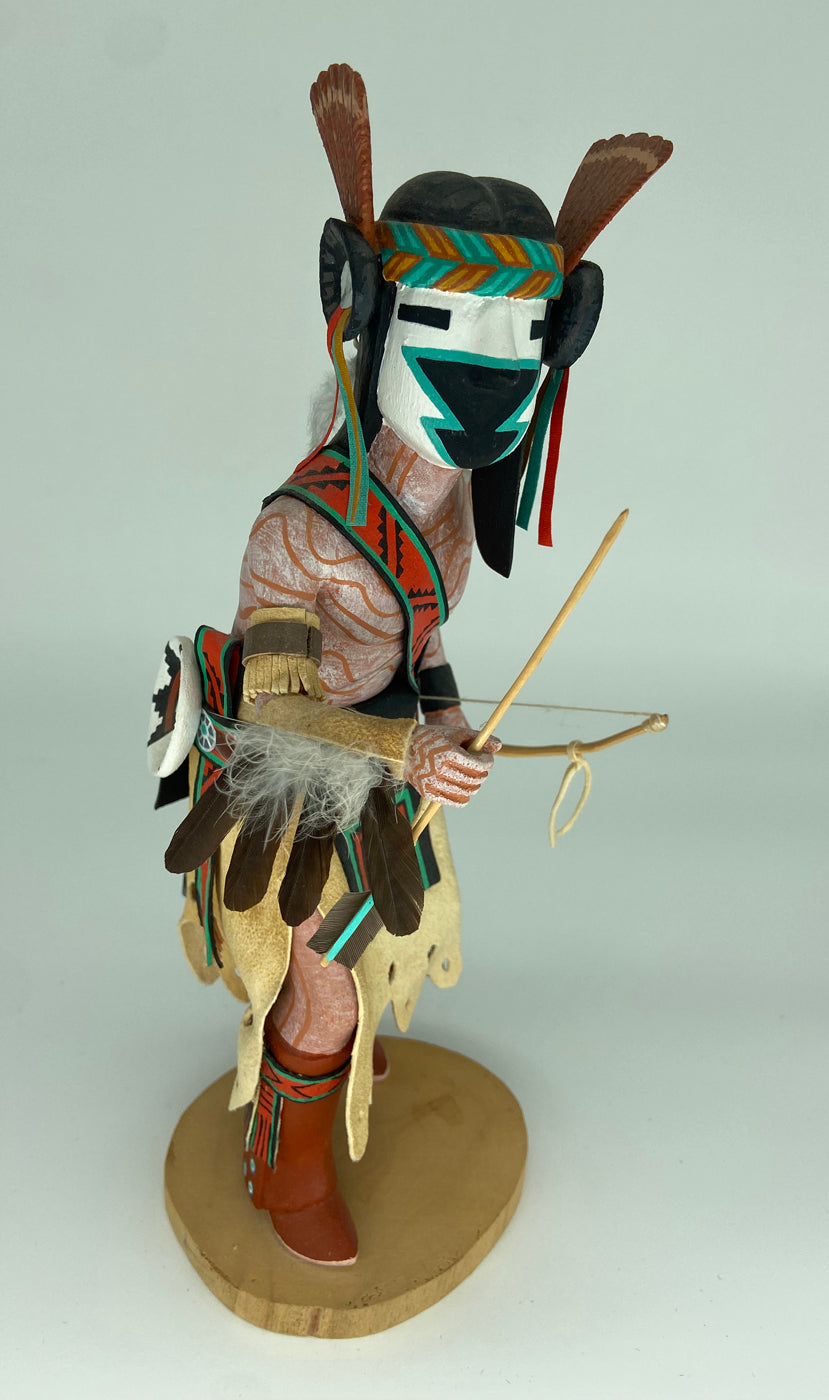
Katsina : Comanche Warrior : Ramon Albert Jr. Dalangyawma
$ 2,500.00
Comanche Warrior by award winning artist Ramon Albert Jr. Object : Katsina (Katchina) Title : Comanche Warrior Carver : Ramon Albert Jr. Dalangyawma Origin : Hopi Size : 10" Materials : Wood, paint, leather, string and feathers Comanche (Komantsi or Tutumsi) pays tribute to the Comanche warrior and his powerful presence. He appears at the Mixe...
Katsina : Mudhead
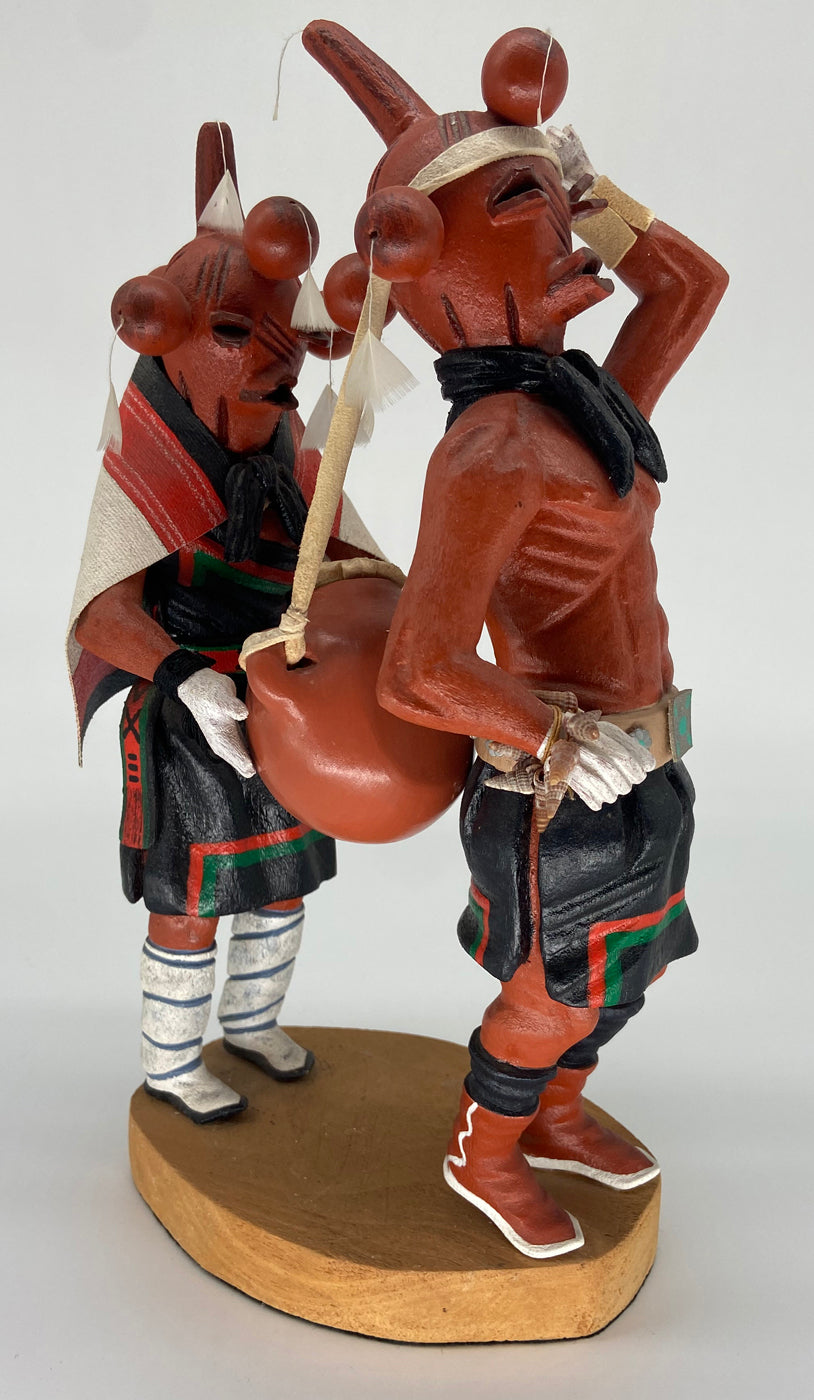
Katsina : Mudhead
$ 4,000.00
Mudhead Katsina for sale. Item : Mudhead (Koyemsi) Carver : unknown Origin : Hopi Size : 14" Materials : Wood, leather, clay, string, feathers, shells, canvass and paint It is not unusual for this doll to be called a Mudhead Katsina or a Koyemsi as those are names that have been used for a hundred years or more. According to Hopi lore, the Mud...
Katsina : Soyal : Peter Shelton Jr
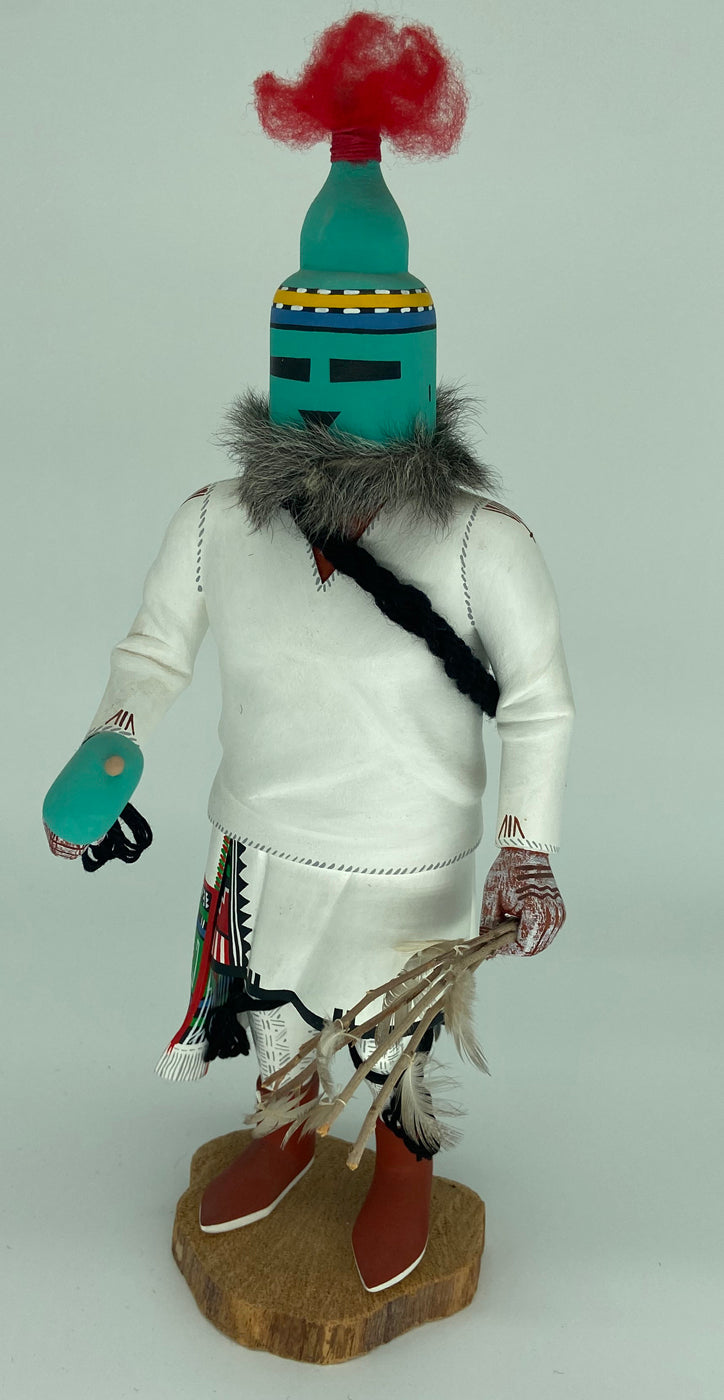
Katsina : Soyal : Peter Shelton Jr
$ 2,500.00
Soyal Katsina by award winning artist Peter Shelton Jr Item : Soyal Katsina Carver : Peter Shelton Jr Origin : Hopi Size : 12" Materials : Wood, fur, yarn, string and paint This Soyal Katsina also known as Return Katsina, carries the symbol of the Soyal Ceremony, and usually arrives in December and signals the return of a Katsina season. Soyal ...
Katsina : Sunface : Lowell Talashoma
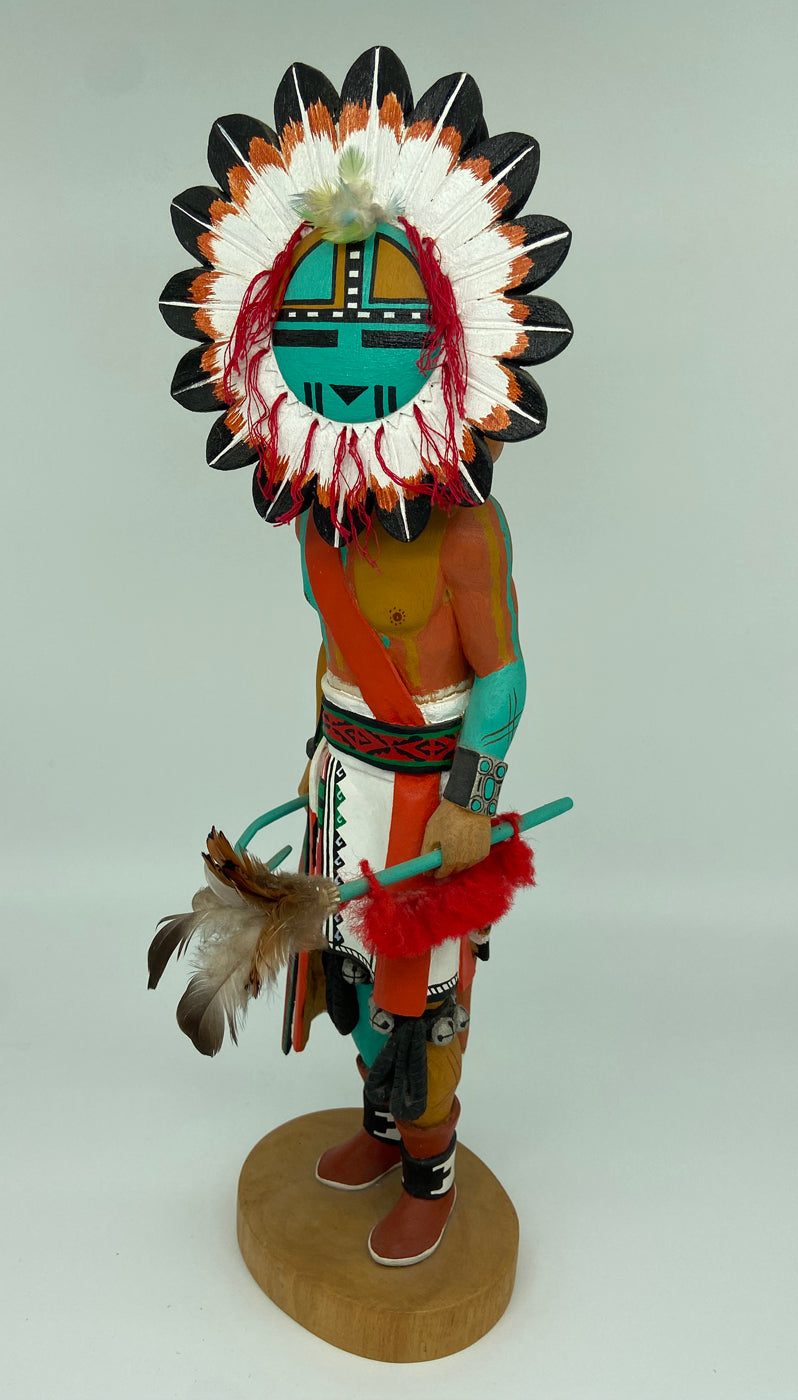
Katsina : Sunface : Lowell Talashoma
$ 3,500.00
Sunface Katsina by award winner artist Lowell Talashoma. Object : Katsina (Katchina) Title : Sunface (Tawa) Carver : Lowell Talashoma. Origin : Hopi Size : 16" Materials : Wood, paint, string, yarn and feathers The Sunface Katsina, known as Tawa, represents many things including the sun’s warmth, hope of shelter for the elderly, and a bright f...
Katsina : Morning Singer : Lauren Honyouti
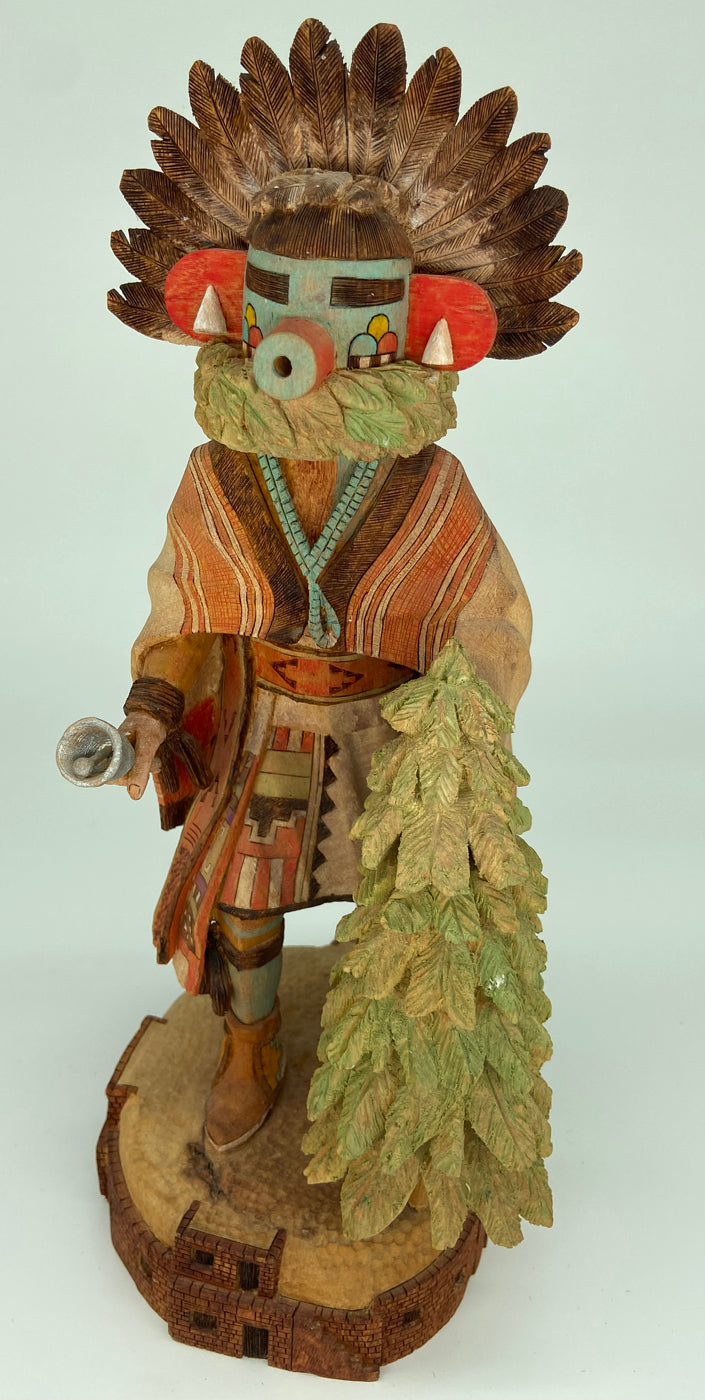
Katsina : Morning Singer : Lauren Honyouti
$ 3,500.00
Morning Singer Katsina by award winning artist Lauren Honyouti. Item : Morning Singer (Talavai ) Katsina Carver : Lauren Honyouti Origin : Hopi Size : 12" Materials : Wood and paint Hopi Morning Singers, (Talavai Katsinas) appear in pairs on the rooftops and sing songs, waking the Hopi people in the village. During the day, they would dance with...







